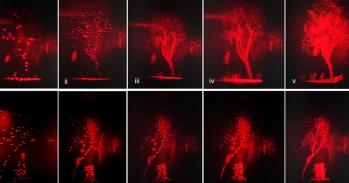
This month, the University of Cambridge will be profiling research that addresses risk and uncertainty. To begin, Professor David Spiegelhalter, Winton Professor for the Public Understanding of Risk, explains why this is a vital field of academic research.
This month, the University of Cambridge will be profiling research that addresses risk and uncertainty. To begin, Professor David Spiegelhalter, Winton Professor for the Public Understanding of Risk, explains why this is a vital field of academic research.
Making important decisions in the face of uncertainty is unsettling and difficult.
Professor David Spiegelhalter
None of us know what is going to happen in the future, either to ourselves or to society. Yet we still have to make decisions, whether it’s a personal dilemma (should I cut down my drinking?) or a political choice (should there be a minimum alcohol price?). Making important decisions in the face of uncertainty is unsettling and difficult, and so is a vital area of academic research, one which is being tackled by a wide range of disciplines and approaches at the University of Cambridge.
From cybercrime to earthquakes, influenza to air travel, the topics researched here reflect issues that are of crucial importance. It is an extraordinarily diverse area, although many informal interactions are increasingly focused on the Centre for Risk Studies, in the Cambridge Judge Business School, and the Centre for Risk in the Built Environment, in the Department of Architecture. Alongside this is a growing role of the Centre for Science and Policy in promoting engagement between policy professionals, business leaders and experts in the sciences and engineering.
But what do we mean by risk and uncertainty? A common distinction is as follows. If we feel we understand what is going on, and have some confidence in our assessment of the chances of different futures, then we can say we are dealing with risks, and can hope to produce a numerically balanced judgement. When we have the humility to acknowledge that we cannot put numbers on everything, then we are dealing with deeper uncertainty, and may instead aim for resilience to surprises. Much research is attempting to extend the domain that can be adequately quantified.
Finally, there has been a traditional division between risk assessment (how big are the risks?) and risk management (what should we do about them?). This is not so straightforward – how we analyse threats is closely connected to what we might be able to do about them. Academics need to be grounded in the real world in order to know both what is important and what is feasible.
This work is licensed under a Creative Commons Licence. If you use this content on your site please link back to this page.





